Are you trying to decide between a cut off tool vs. an angle grinder? Whether it’s for your next project or just for polishing up the edges of your work, understanding the differences between these two tools can save you time and money. Read on to learn more about what sets them apart so that you can make an informed decision.
What is a Cut-Off Tool?
It’s perfect for making cuts in metal, plastic, and wood. The main advantage of using a cut-off tool is its small size and lightweight design – it allows you to easily maneuver into tight spots without having to use a heavy or bulky tool. [1]
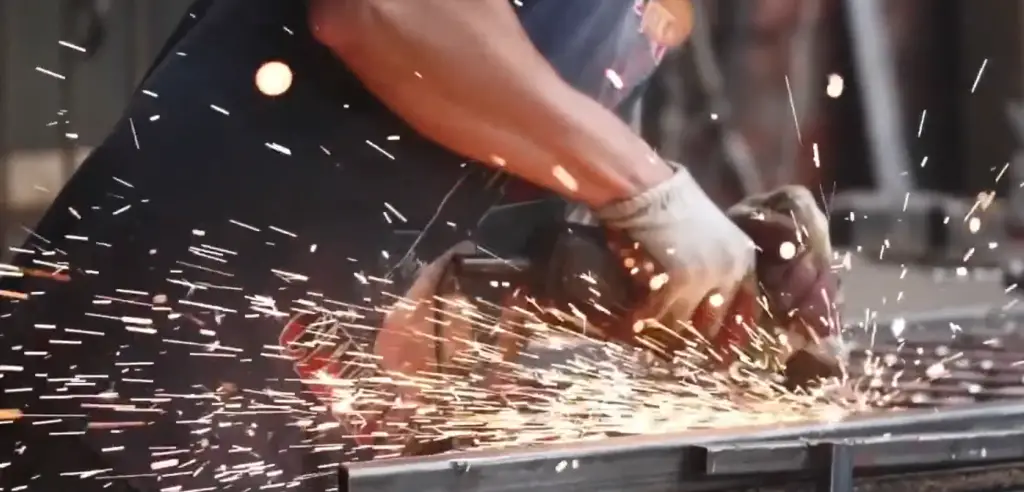
What Is a Cut off Tool Used For?
Cut Off Tool is a portable power tool used for cutting through various materials, such as metal or wood. It typically features an abrasive wheel that rotates at high speed and cuts the material with precision. Common applications of Cut Off Tools include cutting bolts and screws, grinding off weld beads, and slicing materials into thin strips. [1]
What is an Angle Grinder?
An angle grinder is larger and more powerful than a cut off tool. It features a motor that spins the abrasive disc at a higher speed, making it better suited for heavy-duty jobs like grinding metal and masonry material. Not only can it cut through tougher materials, but its larger size also gives you more control over the tool. [1]
What Is Angle Grinder Used For?
Angle grinders are versatile, handheld power tools perfect for grinding, cutting and polishing. They can be used to cut metal or stone surfaces quickly and precisely with the right disc. Angle grinders are powered by electricity, compressed air or a battery-powered motor and feature a rotating cutting disc that cuts through heavy materials such as metal, masonry and concrete. They’re often used on construction sites, auto repair shops and other places where speed is key. [1]
Angle Grinder vs Cut-off Tool
Purpose
When it comes to deciding between an angle grinder and a cut-off tool, the main factor to consider is the purpose of the tool. Angle grinders are typically used for grinding, cutting and polishing materials such as metal or stone. Cut-off tools are usually reserved for thin materials like sheet metal, pipes, rods or bolts. [3]
Design and Safety
Angle grinders have a cylindrical shape with an internal motor, while cut-off tools are typically slimmer and lighter than angle grinders due to their low power requirement. Angle grinders also have guards to protect the user from sparks or debris, making them safer when used for cutting and grinding compared to cut-off tools.
Cut-off tools are designed for quick and efficient cutting of thin materials, making them much less dangerous than angle grinders when used in confined spaces or on delicate structures. Furthermore, they have a trigger switch rather than an On/Off switch, reducing the risk of accidental operation. [3]
Disc Size
The disc size of an angle grinder is usually larger than a cut-off tool, with the standard size being 4.5 to 9 inches. The power required depends on the material you are working with; for example, thicker materials require more powerful motors which in turn means a bigger and heavier machine. Cut-off tools generally have smaller disc sizes ranging from 2 to 4.5 inches making them easier to control and more portable. [3]
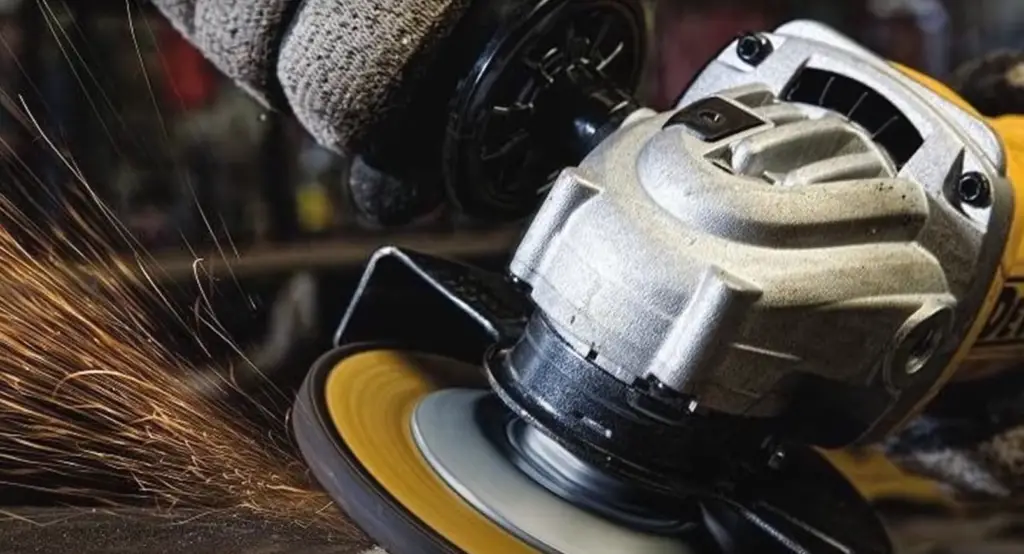
Depth of Cut
Angle grinders offer more depth of cut than cut-off tools and can handle materials up to 9 inches thick. They also have a higher RPM (revolutions per minute) which means they can work faster on thicker materials. Cut-off tools, on the other hand, are limited in terms of the depth of cut and are best suited for thin materials (up to 1/2 inch thick). [3]
Cost
The cost of an angle grinder is usually higher than that of a cut-off tool due to the larger size and more powerful motor. Cut-off tools, on the other hand, are generally cheaper than angle grinders and require less maintenance. [3]
Wheel Orientation
Angle grinders are designed to use wheels that rotate in a horizontal plane, while cut-off tools allow for the wheel to be positioned so that it is perpendicular to the material being worked on. This orientation allows for greater precision when cutting thin materials such as sheet metal or pipes. [3]
Speed
Angle grinders can reach up to 12,000 RPM which makes them suitable for heavy-duty applications like grinding and cutting.
Size
Angle grinders are usually larger and heavier than cut-off tools due to the more powerful motor. Cut-off tools, on the other hand, have a lighter frame and are easier to maneuver around tight spaces.
Ultimately, when it comes to deciding between an angle grinder or cut-off tool, it’s important to consider the purpose of the tool, disc size, depth of cut, cost, wheel orientation and speed. By considering these factors you can make an informed decision about which tool is best suited for your task. [3]
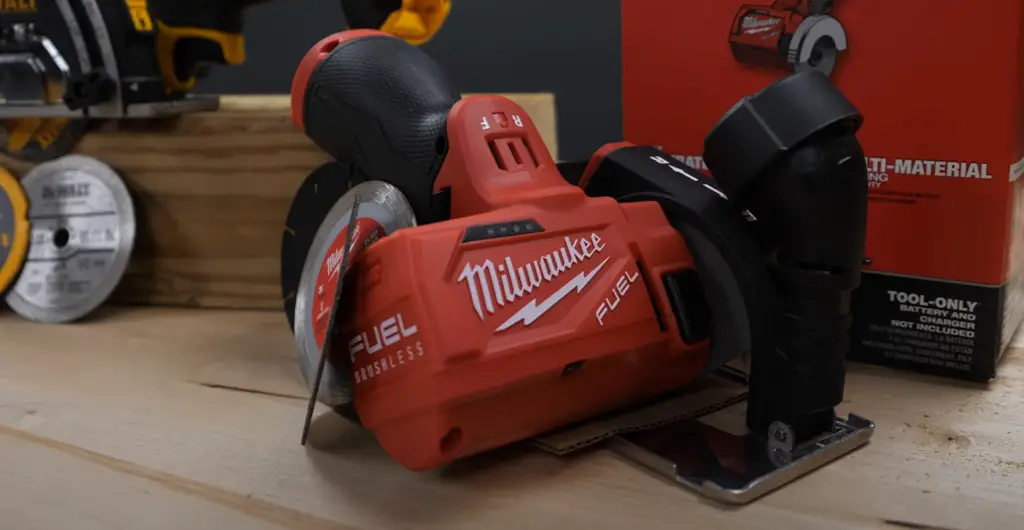
Weight
Cut off tools are lightweight and designed to be handheld, meaning they are much easier to transport. Angle grinders, on the other hand, tend to be heavier and more cumbersome due to their larger size and greater power output. If you need to work in tight spaces or move your tool around a lot, a cut-off tool is the better choice for you. [3]
Power
The power of a cut-off tool and an angle grinder are worlds apart. A cut-off tool typically has 1,000 to 2,500 watts of input power while an angle grinder can have anywhere from 5,000 to 12,000 watts. This means that the angle grinder is much more powerful than a cut-off tool and can tackle tougher jobs. This also means that it is much easier to cut through thicker materials with an angle grinder than a cut-off tool. [2]
Scale of Work
The scale of the job you are doing should also be taken into consideration. If you’re looking for precision cuts and want to make a quick job of it, then the cut-off tool is the better option as its smaller size allows for more precise control. However, if you need to grind or cut through anything thick, an angle grinder is the better choice for you. [2]
Ease of Use
The ease of use for a cut-off tool and an angle grinder is also quite different. Cut off tools are easy to control and require less effort from the user as they offer more maneuverability due to their smaller size. Angle grinders, on the other hand, require more strength in order to handle them as they are often heavier and require more effort to move around. [1]
Versatility
Both cut-off tools and angle grinders offer their own unique set of advantages. Cut off tools are great for precision work such as cutting pipes, rebar, bolts, and other small objects with ease. Angle grinders are ideal for larger projects such as grinding down welds, sharpening blades, or cutting through thicker materials. [1]
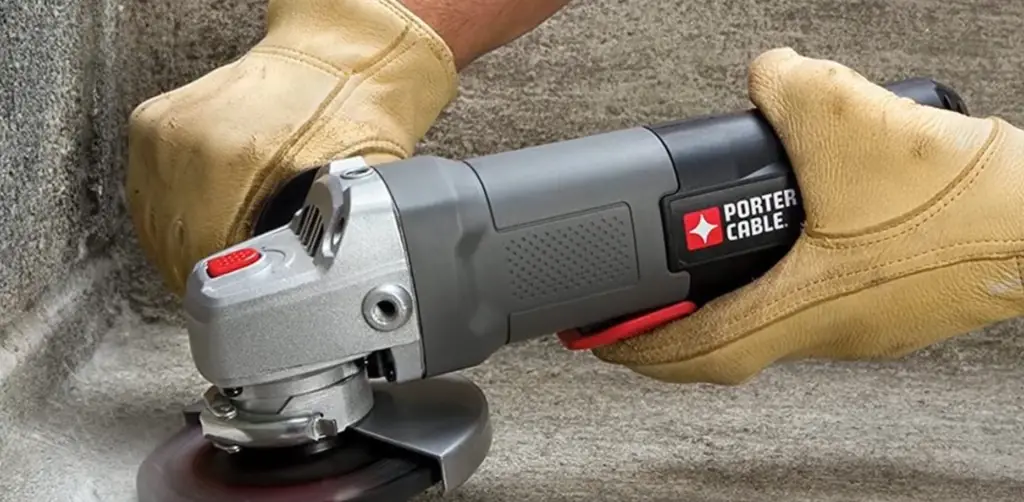
Functions
When it comes to the functions of a cut-off tool and an angle grinder, they are both quite versatile. Cut off tools can be used for cutting, grinding, sanding, and more while an angle grinder is great for grinding, polishing, sharpening, and much more. [1]
How Do I Choose Between An Angle Grinder And A Cutoff Tool?
Handling
Choosing between an angle grinder and a cutoff tool depends on the job needs. It’s important to consider the safety of using the tool, as well as how comfortable you are with handling it.
If your job requires a lot of precision cutting or grinding, then an angle grinder is likely the better choice. It provides more control over the cut and is better suited for intricate cuts or to create finer finishes. On the other hand, a cutoff tool offers more power and can be used on thicker materials like metals. [2]
Application
When it comes to the applications of an angle grinder and a cutoff tool, consider the material you are working with. An angle grinder is more suited for grinding down materials like stone or concrete while a cutoff tool can be used to cut through thicker materials such as metal. [2]
Horsepower
Another factor to consider when choosing between an angle grinder and a cutoff tool is the horsepower. Angle grinders come in a range of sizes from small 4-inch models up to 9- or 11-inch versions that can handle higher loads. Cutoff tools also vary in size and power, with some offering up to 3,500 revolutions per minute (RPM). [2]
Positioning
Lastly, consider the positioning of the tool. An angle grinder is best suited for cutting or grinding materials in a horizontal position while a cutoff tool can be used in both vertical and horizontal positions. This makes it easier to reach tight spots so you don’t have to move your workpiece around as much. [3]
Safety Options
When using either an angle grinder or a cutoff tool, always make sure you are wearing the proper safety equipment. Both tools should have adjustable guards and side handles to help keep your hands out of harm’s way. Also be aware of any sparks or debris that may be created while operating the tool and wear eye protection to prevent injury. [3]
Pricing
The cost of an angle grinder or a cutoff tool varies depending on the size and power of the model. Smaller models can range from $20 to $50 while more powerful tools may cost up to several hundred dollars. Ultimately, it depends on your job needs and how often you will be using the tool. [3]
When to Purchase a Cut-Off Tool?
If you’re a DIYer or infrequent user for minor projects, then a cut-off tool is an ideal choice. It offers great value and can be used to easily handle small jobs like cutting through bolts, screws, nails, nuts and other materials.
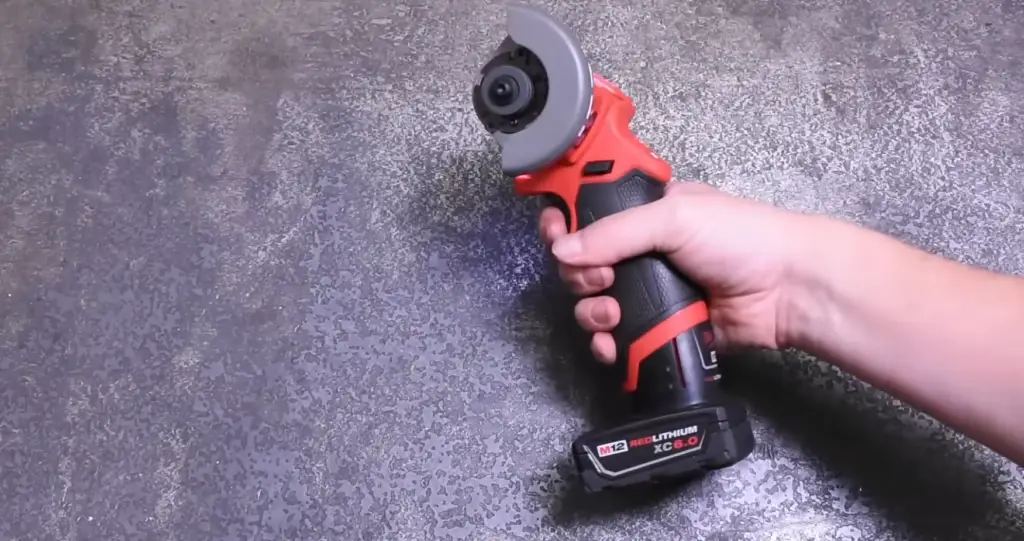
A cut-off tool is powered by electricity or batteries, which makes it lightweight and easier to use than an angle grinder that requires fuel or air power. [1]
Who Should Get an Angle Grinder?
If you’re looking for a tool to make quick work of cutting through metal, stone, brick or other materials, an angle grinder is the way to go. Angle grinders are great for tackling tough jobs including removing rust from metal surfaces, grinding welds and cutting masonry quickly. They can also be used for polishing and buffing.
Angle grinders are versatile tools that can be used for a variety of tasks, but they’re not ideal for every job. They require some skill to handle safely, so if you’re inexperienced with power tools, it’s best to get some instruction in how to use them before attempting to use an angle grinder. [1]
FAQ
Can you use an angle grinder as a cut-off wheel?
Yes, you can use an angle grinder as a cut off wheel. However, it is important to understand that the grinding wheel and cut off wheel are designed for different tasks and should not be used interchangeably or simultaneously. The grinding wheel is designed for material removal while the cutting wheel is built with a harder composition which is best suited for making cuts in metal and other hard materials.
What is the difference between grinding and cutting?
Grinding and cutting are two different operations that use different tools to achieve desired results. Grinding is a type of material removal process which uses an abrasive wheel to remove material from metal or other hard surfaces. Cutting, on the other hand, is a precision operation used for making precise cuts in metal and other materials using a special tool like a cut-off wheel.
What’s the difference between an angle grinder and a grinder?
The angle grinder is a handheld power tool used for grinding and cutting materials, while the grinder is a stationary tool that features two abrasive wheels. The angle grinder has a sizing disc or wheel attached to the motor shaft which allows it to be used for different cutting operations and for larger objects. A regular grinder typically uses only one abrasive wheel which makes it better suited for precision grinding and sharpening of tools.
What are 3 types of grinders?
- Angle Grinder: A handheld power tool used for grinding and cutting materials.
- Die Grinder: A stationary tool which uses a spindle-mounted abrasive wheel to grind or sand down surfaces such as metal, wood, stone and plastic.
- Bench Grinder: A stationary two-wheel grinder used for precision grinding and sharpening of tools.
What is a Dewalt cut off tool used for?
A Dewalt cut off tool is a handheld power tool used for cutting through metal and other hard materials. It features a small, lightweight design which makes it ideal for completing quick, precise cuts in tight spaces. The tool also uses a special cut-off wheel which helps ensure that the material being cut won’t be damaged during the operation.
Is a cut-off tool a grinder?
No, a cut-off tool is not a grinder. While the two tools look similar and can both be used for cutting metal and other hard materials, they are designed for different operations. The cut-off tool uses a special wheel to make precise cuts in metal while the grinder is designed mainly for material removal using an abrasive wheel.
What would you use a cutout tool for?
A cutout tool can be used for a variety of tasks such as cutting through metal, wood, stone and other hard materials. It can also be used to make precise cuts in tight spaces where a larger cutting tool would not fit. The tool is also ideal for completing intricate design work or making decorative cuts in materials like tile.
What is a cut-off blade used for?
A cut-off blade is a specially designed cutting tool used for making precise cuts in metal and other hard materials. The blade is typically attached to a handheld power tool like an angle grinder, die grinder or cut off tool. Cut-off blades are ideal for completing intricate design work or creating decorative edges on materials like stone and tile.
Useful Video: Angle Grinder vs Cut Off Tool – What’s the Difference?
Conclusion
So, when it comes to Cut Off Tool vs. Angle Grinder: What’s the Difference? – there are a few key points to consider. Ultimately, the decision between these two power tools depends on your needs and preferences. Both can be used for a variety of applications, but the cut off tool is more specialized and designed for precise, smaller cuts. An angle grinder is more suitable for larger projects and can be used for a wider range of tasks.
No matter which one you decide on, always remember to use safety gear and operate the tool according to manufacturer instructions to ensure your safety. With careful consideration and practice, you’ll be able to get the most out of your tool and optimal results. Good luck!
References
- https://benchmarkabrasives.com/blogs/news/angle-grinder-vs-cut-off-tool#
- https://www.finepowertools.com/grinders/angle-grinder-vs-cut-off-tool/
- https://handymansworld.net/angle-grinder-vs-cut-off-tool/






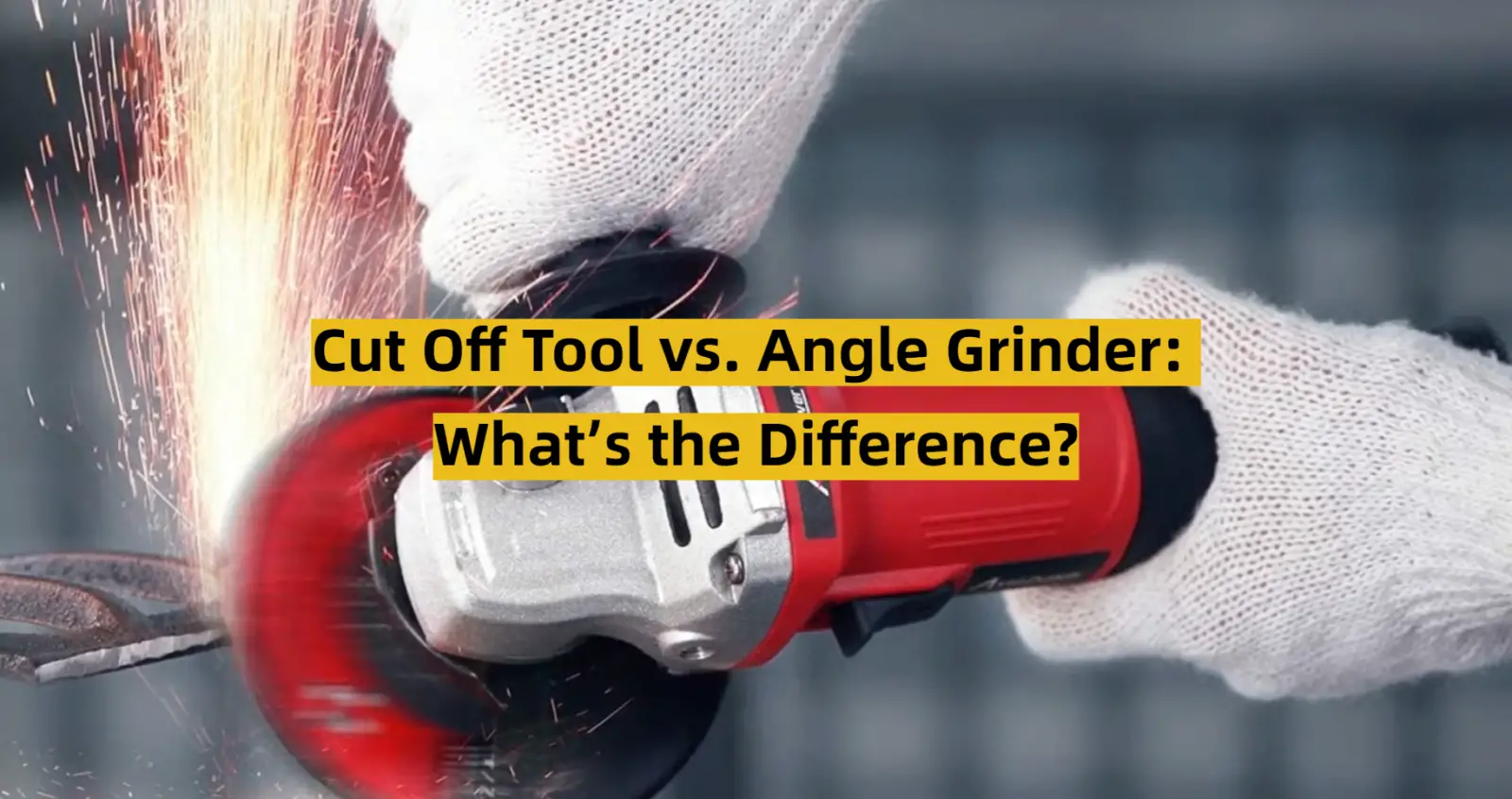






Leave a Reply